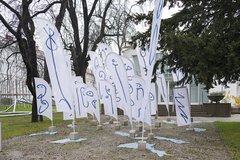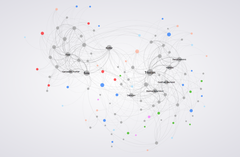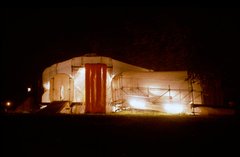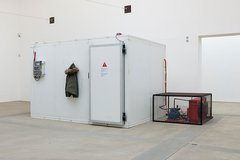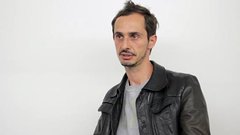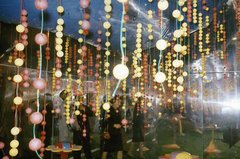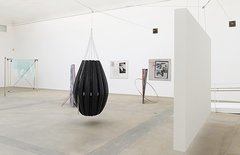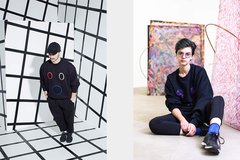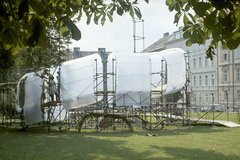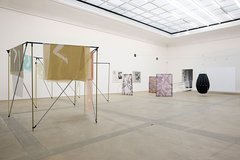Artist Micol Assaël speaks about the importance of the viewer’s experience and how we should not privilege seeing over other bodily sensations because “there is always a bigger picture.”
We shouldn’t focus only on
what we think we can control
Some of your work seems to be “dangerous” in that they makes use of electricity or electromagnetic fields, electrical wiring or old engines that look like you better keep your hands off of them—what is it that draws you to an idea of “risk” or “danger”?
Probably to look at the limits of reality and try to force them, in the attempt to find a new way of understanding that might drive you to some sort of curiosity and wonder.
Your work Vorkuta consists of a cell or chamber with -35 degrees celsius and a heated chair in the middle for the visitors to sit down. The title refers to a Soviet work camp. How do you deal with the dialectic between historic references and a direct, bodily experience?
When I found myself in Vorkuta in the summer of 2001 I didn’t know about the labor camp, it was just the most remote place that I could reach at that time. The perception of the work is the result of a mental and physical experience as a synthesis of something maybe too complex to be set in words. It involves the body as vehicle of sensations that might put you in a critical position with yourself and the environment you find yourself in. The chair is kept at body temperature so that the energy of the public is transmitted and preserved through it over and over. It’s not a real dialectic with historic references, it’s more a consciousness (awareness) of something that was already there but is slowly and constantly changing.
Often, as in your work here in Graz, you try to give the visitor “more” than just a visual experience – one that encompasses temperature, sound, smells, even electrostatic fields – what’s the role of immersion for your work?
Ideally, each sense involved in the perception of the work is alerting the other senses, so that they all interact and interfere with each other as part of a whole that is continuously fading. I believe that we are part of something bigger than pure vision and we shouldn’t focus only on what we think we can control.
All-encompassing as they are and constructed as cells or chambers, some of your works seem to establish environments in their own right, not tied to any specific place or time. How do inside and outside relate to each other in your work?
There’s always a bigger picture to place the work in a productive relation with its environment, as much as the question of time is determined by the viewers. (We tend to place the work in a productive relation with its environment but there’s always a bigger picture where both are involved. As much as the question of time is determined by the viewers.)
Sometimes, your work seems to be heavy on the material and “mechanical” side: motors, engines, wiring, often dirty and old. Did you ever think to work with “clean” digital techniques? And if not, why isn’t that an option for you?
I don’t trust the digital, and it also doesn’t look totally clean to me. All these computers and touch screens are filtering the reality and somehow taking us apart. My last work, Walking Distances, is an attempt to weigh the sunlight through small white marble cubes that can be collected by the viewers once the sound of a melting glacier has pushed them (the cubes) out of the surface. People and sound slowly deconstruct the form toward immateriality. But is still possible to size the weight of light so to speak, walking with a marble cube in your pocket and stopping for a minute to see how much sunlight it retains.
